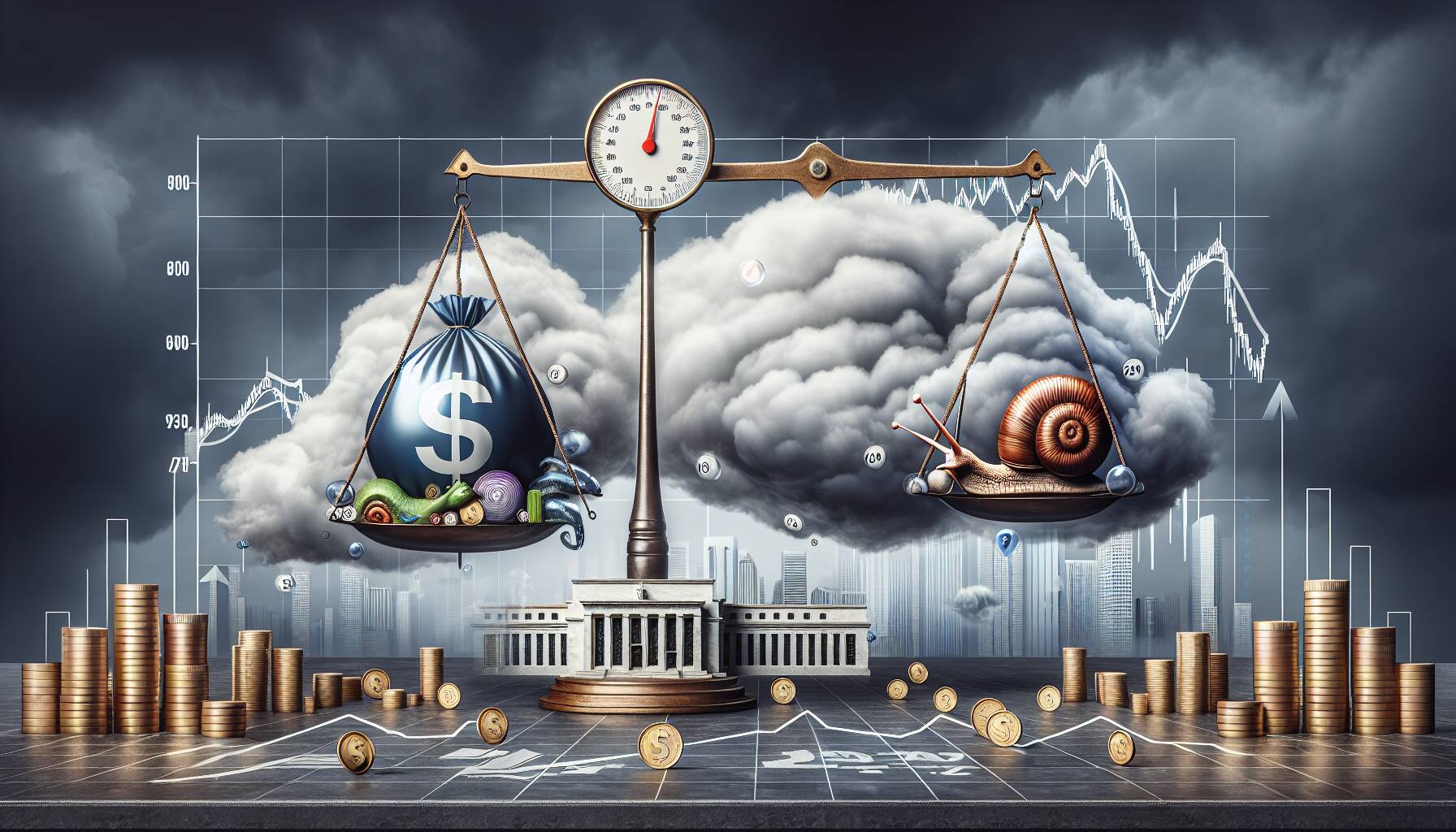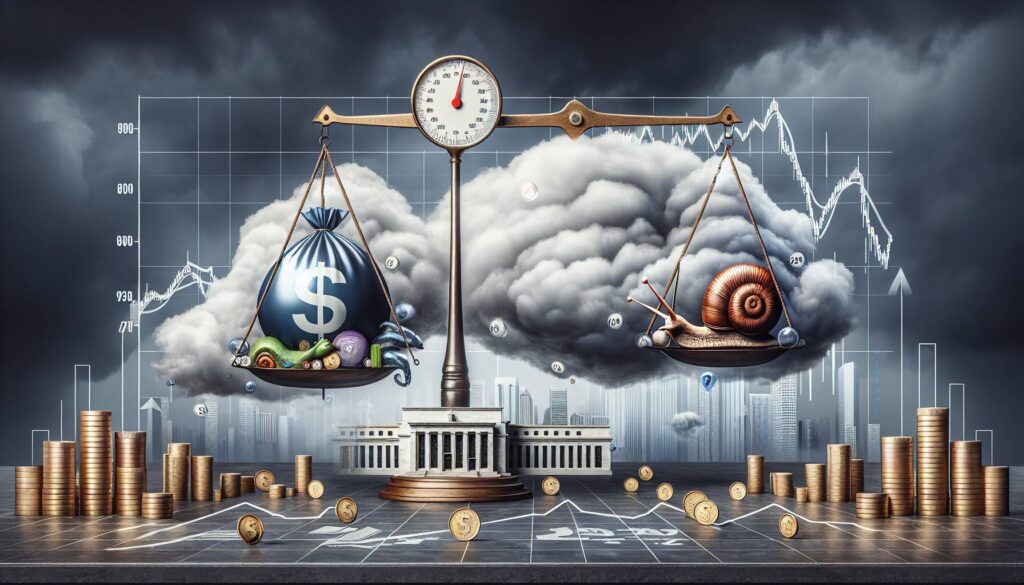The Federal Reserve is increasingly recognizing the potential risks of stagflation—a troubling mix of stagnant economic growth and rising inflation that could pose a serious challenge for monetary policymakers. During a recent announcement, Chair Jerome Powell characterized the economy as being in “good shape,” while also subtly hinting at growing concerns regarding its future trajectory.
By holding steady on its benchmark interest rate, the Fed acknowledged the looming threats of inflation and unemployment, which are classically seen as indicators of stagflation. This economic phenomenon notably affected the U.S. throughout much of the 1970s and presents a dilemma: how to stimulate a faltering economy without exacerbating inflationary pressures. Zach Pandl, head of research at Grayscale, highlighted these concerns on X, suggesting that if stagflation does materialize, it could create a favorable environment for Bitcoin.
“Bitcoin was not around for past stagflations, but can be considered a scarce digital commodity and is increasingly viewed as a modern store of value,” Pandl noted in his analysis, correlating rising tariffs with traditional asset volatility while positioning Bitcoin as a potential safe haven.
In the immediate aftermath of the Fed’s decision, Bitcoin displayed a modest increase, climbing to approximately $96,500, marking a 1.6% gain over the preceding 24 hours. This uptick was welcomed, particularly amidst positive sentiments regarding U.S.-China trade discussions. In contrast, the broader cryptocurrency market, as represented by the CoinDesk 20 Index, showed only a slight increase of 0.3%. Many popular cryptocurrencies like XRP, AVAX, UNI, NEAR, and AAVE faced losses ranging from 1% to 3% during the same timeframe.
Simultaneously, traditional stock markets showed signs of recovery, with the S&P 500 and Nasdaq indices increasing by 0.4% and 0.3%, respectively, after earlier declines. This interplay between the cryptocurrency market and traditional finance reveals a complex landscape influenced by central bank policies and economic indicators.

The Federal Reserve’s Alertness to Stagflation Risks
The Federal Reserve’s recent observations on the economy bring significant implications for both traditional and digital assets, particularly Bitcoin. Here are the key points to consider:
- Stagflation Concerns:
- The Federal Reserve is increasingly aware of stagflation risks — a combination of slowing growth and rising inflation.
- This situation presents challenges for policymakers as it limits their options to stimulate the economy without exacerbating inflation.
- Current Economic Outlook:
- Chair Jerome Powell maintains that the economy is in “good shape,” yet the Fed’s policy statements show increased caution.
- Holding the benchmark interest rate steady indicates a careful approach amidst uncertainty about inflation and unemployment trends.
- Implications for Assets:
- Stagflation historically affects traditional assets negatively while benefiting scarce stores of value like gold.
- Bitcoin is emerging as a modern store of value amid these economic concerns, especially as it is viewed as a scarce digital commodity.
- Market Reactions:
- Following the Fed’s announcement, Bitcoin experienced fluctuations, indicating market sensitivities to policy changes.
- The wider crypto market, as measured by the CoinDesk 20 Index, showed modest gains, albeit overshadowed by declines in several altcoins.
- Equities showed slight recovery after earlier losses, which might reflect investor sentiment toward both traditional and digital assets in light of Federal Reserve actions.
Zach Pandl, head of research at Grayscale, suggests that stagflation may be beneficial for Bitcoin, hinting at a shift in investor strategies.
The intersecting dynamics of inflation risks, central bank policies, and asset value perceptions are crucial considerations for individuals navigating their financial decisions in today’s economy.
Analyzing the Federal Reserve’s Stagflation Concerns and Their Impact on Financial Markets
The Federal Reserve’s recent acknowledgment of stagflation risks highlights an evolving economic landscape that poses both challenges and opportunities for various market participants. As Chair Jerome Powell maintains a cautious but confident stance on the economy, the implications for traditional assets as well as alternative investments are becoming increasingly significant.
Competitive Advantages and Disadvantages: The Fed’s concern over rising inflation and stagnant growth creates a unique scenario for investors. Historically, stagflation has led to a lack of confidence in conventional investments like stocks and bonds, often making them less appealing during periods of economic instability. In contrast, cryptocurrencies, particularly Bitcoin, are gaining traction as potential safe havens during this turbulence. As pointed out by Zach Pandl from Grayscale, Bitcoin could emerge as a “scarce digital commodity,” attracting those looking to hedge against inflation.
On the downside, the central bank’s policy of maintaining steady interest rates leaves little room for maneuvering in the face of rising inflation and unemployment. This can create a sense of uncertainty, causing investors to hesitate and potentially stifle market growth. Furthermore, the mixed signals from the Fed could lead to volatility in both equity and crypto markets, as traders react to shifting economic indicators.
Beneficiaries and Potential Obstacles: The ongoing dialogue about stagflation could disproportionately benefit those engaged in cryptocurrencies, particularly those who view Bitcoin as a modern store of value. Investors drawn to alternative assets during times of economic distress may increase demand for Bitcoin, driving its value higher. Additionally, gold could see renewed interest, further validating its status as a traditional hedge against inflation.
However, traditional sectors like financial services and consumer goods may face headwinds as rising costs and sluggish growth challenge their profitability and market performance. Thus, companies operating in these sectors might struggle to maintain their stock valuations, while traders and institutional investors may need to recalibrate their strategies in response to the uncertain economic climate.
In a nutshell, while the Federal Reserve’s foresight into stagflation presents significant opportunities for crypto enthusiasts and commodity investors, it simultaneously raises substantial challenges for traditional asset holders. Understanding these dynamics will be crucial for anyone navigating today’s complex financial landscape.
















